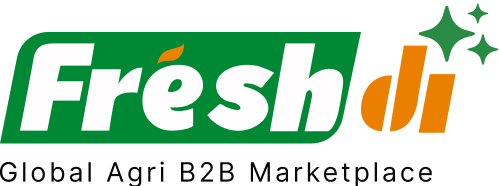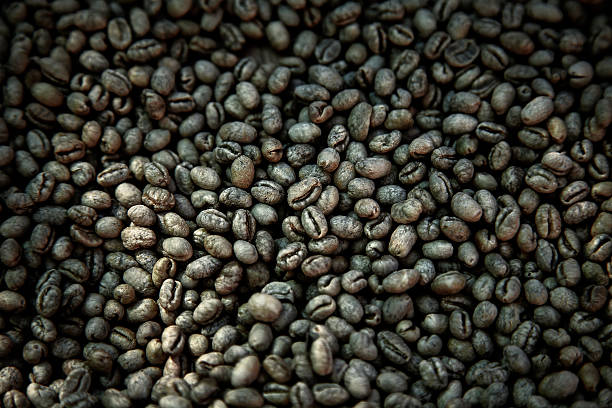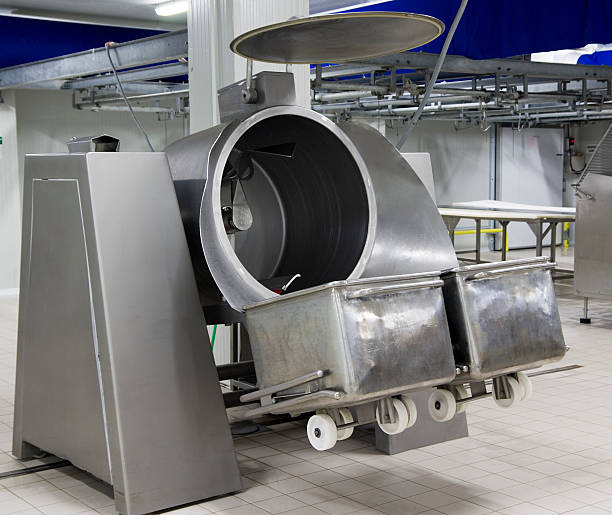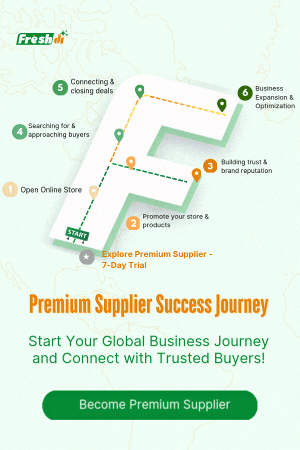Introduction – Current State of Play: The Robusta Coffee Sector in Spain
If you’re in the coffee business, Spain’s Robusta market in late 2025 is something you’ll want to keep a close eye on. Why? Because a perfect storm of environmental, economic, and regulatory changes is reshaping the way Robusta coffee is sourced, priced, and consumed. Whether you’re importing beans, roasting them, or selling to consumers, these shifts could make or break your margins.
Let’s start with the big one: Vietnam, the world’s top Robusta producer and Spain’s biggest supplier, has seen a 9.45% drop in export volumes in the first four months of 2025. Severe droughts have impacted yields, causing a supply crunch. Yet, interestingly, the export value shot up by 51.8%, thanks to soaring global prices.
Meanwhile, Brazil—although more famous for its Arabica—has also experienced weather-related setbacks, with droughts and frosts slashing production by around 10%. Even though Spain imports fewer Arabica beans, this shortage pressures the entire market, causing ripple effects for Robusta too.
And let’s not ignore the price rollercoaster. Robusta prices peaked at $2.75/lb earlier this year but have since corrected to around $1.73/lb. These swings are driven by the usual suspects: supply constraints, global demand shifts, and speculative trading.
Spain’s particular situation makes this even more interesting. The country is Europe’s fourth-largest importer of green coffee, and Robusta makes up nearly 59% of its imports. This preference for affordable, punchy coffee blends has long defined Spanish coffee culture.
But there’s a new twist: regulations. The EU Deforestation Regulation (EUDR), coming into full effect by December 2025, will require full traceability for coffee imports. That means businesses must now prove their beans aren’t linked to deforested land—no small feat, especially for those sourcing from regions with poor documentation.
And don’t overlook global trade politics. A 10% U.S. import tax on Vietnamese coffee, introduced in April, is altering global trade flows. While it doesn’t directly affect Spain, it could shift availability and competition for Vietnamese beans.
So, what’s the bottom line? Spain’s Robusta coffee market is in flux. From climate shocks to policy overhauls and price spikes, the only constant is change. Businesses that stay informed and agile will be the ones who thrive.
Deep Dive – Breaking News: Critical Updates & Their Effects
Let’s unpack the freshest developments shaking up Spain’s Robusta coffee landscape.
First, there’s a cultural shift brewing. The traditional Torrefacto roast—where sugar is added during roasting for a burnt, bitter taste—is on the decline. Spanish consumers are pivoting toward higher-quality, specialty, and certified coffees, echoing a broader European trend.
This isn’t just talk. The specialty coffee market in Spain is projected to hit $3.67 billion by 2030, growing at a CAGR of 8.6% from 2025. That’s huge. It’s a clear sign that consumers are willing to pay more for quality, sustainability, and flavor.
On the supply side, things are tense. Extreme weather has battered crops in Vietnam and Brazil, causing global shortages and price hikes. Add to that logistical issues and higher freight costs, and you’ve got a shaky supply chain.
But it’s not all gloom. New investments are flowing into the global coffee ecosystem. A prime example? The Green Coffee Company raised $15 million in late 2024 to expand its Colombian operations and roasted coffee ventures. While not Spain-specific, this shows growing confidence in coffee’s long-term value.
So what does this mean for Spain?
- Importers need to diversify their sourcing.
- Roasters must rethink blends to adapt to supply and price changes.
- Retailers should highlight traceability and sustainability to meet rising consumer expectations.
With these changes, platforms like Freshdi are becoming essential. They help buyers track supplier credibility, RFQ trends, and shifts in certifications—all in real time.
Top 10 Verified Robusta Coffee Suppliers in Spain – Navigating Current Market Realities
Here are the Top 10 Robusta Coffee Suppliers in Spain for Q3 2025, vetted based on their export capacity, certifications, Freshdi platform feedback, and adaptability to current market conditions:
-
STARK COFFEE COLOMBIAN COFFEE
Known for premium-grade Robusta and consistent supply chain practices, this supplier has earned high marks for transparency and traceability. -
Prime Coffee
A go-to for mid-scale buyers seeking certified Robusta beans, Prime Coffee offers flexible shipping options and excellent customer service. -
UBAGO CAFETEROS, S.L.
This Spain-based supplier is praised for its fast delivery and compliance with EUDR traceability standards. -
Alsanabani
Specializing in ethically sourced Robusta, Alsanabani is expanding its footprint in Europe through direct trade relationships. -
PALCAFE
A longstanding player in the Spanish market, PALCAFE is known for its robust logistics network and consistent bean quality. -
Tropical Fruits Granada Subtropical Coast Import Export
While primarily focused on fruit, this supplier has diversified into Robusta coffee and quickly gained traction among Freshdi users.
Dynamic Ranking Note: Rankings on platforms like Freshdi are updated frequently. Keep an eye out for “Supplier of the Month” or “Top Exporter of the Quarter” badges reflecting real-time performance and feedback.
Market Navigation – Strategic Responses to The Prevailing Robusta Coffee Landscape in Spain
So, how should businesses respond to these market tremors?
Immediate Opportunities
-
Tap into the Decaf Boom
Spain is Europe’s #1 market for decaffeinated coffee, accounting for 20% of all consumption. That’s a huge demand segment waiting to be served with high-quality, decaffeinated Robusta. -
Invest in Specialty Robusta
The misconception that Robusta can’t be premium is fading. With better post-harvest processing—think washed or honey-processed beans—Robusta can compete in the specialty space. It’s time to rethink your blend formulas.
Key Challenges
-
Navigating Price Volatility
Robusta prices are swinging wildly. From historic highs in 2024 to recent corrections, managing cost predictability is tough. Lock in contracts when rates are favorable, and keep an eye on futures. -
Managing Supply Chain Risks
From Vietnam’s droughts to global shipping delays, sourcing is more complex than ever. Fail to plan, and you risk empty shelves.
Smarter Sourcing Strategies
-
Diversify Your Origin Portfolio
Don’t rely too heavily on Vietnam. Explore suppliers from Uganda, Indonesia, or even Brazil, which may boost Robusta output in 2025 beyond expectations. -
Build Direct Trade Links
Cut out the middleman. Going direct with producers not only secures better pricing but also improves transparency—a must under EUDR.
Short-Term Outlook
Expect moderate growth in Spain’s coffee market, with a 1.55% annual increase in at-home coffee consumption through 2030. However, the specialty Robusta category will likely outpace that, growing at 8.6% CAGR.
Latest Developments Worth Watching
- Brazil’s Robusta harvest in May 2025 is exceeding expectations. More supply could ease price pressure.
- U.S. tariffs on Brazilian coffee may redirect exports toward Europe, potentially benefiting Spanish importers.
Conclusion – Key Takeaways for Businesses in a Rapidly Evolving Market
Spain’s Robusta coffee market is at a pivotal moment. With climate change disrupting supply, new EU regulations demanding full traceability, and consumer tastes shifting toward quality and sustainability, businesses must adapt—or risk falling behind.
Here’s what you need to do:
- Re-evaluate your suppliers regularly.
- Diversify sourcing to mitigate risk.
- Promote traceability and certifications to align with EUDR and consumer expectations.
- Explore new market segments, including decaf and specialty Robusta.
Platforms like Freshdi make this easier. With real-time RFQ trends, verified supplier directories, and alerts on regulatory changes, Freshdi empowers buyers to stay ahead of the curve.
Checklist for Robusta Coffee Buyers in Spain (Q3 2025)
✅ Verify supplier compliance with EUDR
✅ Monitor real-time RFQ trends via Freshdi
✅ Include specialty Robusta in your product mix
✅ Establish direct trade agreements
✅ Track price developments weekly
✅ Diversify sourcing beyond Vietnam
✅ Explore decaf options for health-conscious consumers
✅ Audit supply chains for traceability
✅ Stay updated on global trade shifts
✅ Use platforms like Freshdi for verified sourcing
Future Outlook
Looking ahead, the Robusta coffee sector in Spain is expected to become more premium-focused, regulation-driven, and digitally enabled. Companies that invest now in digital tools, sustainable practices, and supplier relationships will be best positioned to win.
The market’s not just growing—it’s evolving. Are you ready to evolve with it?
FAQs
1. Why is Robusta coffee so popular in Spain?
Robusta is more affordable than Arabica and suits Spain’s traditional preference for strong coffee blends. It’s also widely used in commercial coffee products.
2. How will the EU Deforestation Regulation affect buyers?
It will require full traceability of coffee beans, meaning importers need to verify that their products are not linked to deforestation. This could limit supplier options and increase costs.
3. Is it a good time to invest in specialty Robusta?
Yes. As consumer demand shifts toward quality and sustainability, high-grade Robusta with improved processing methods is gaining traction, especially in European markets.
4. What role does Freshdi play in sourcing Robusta coffee?
Freshdi provides verified supplier data, real-time RFQ activity, traceability insights, and market trend analysis—crucial tools for navigating today’s volatile coffee market.
5. Can Brazil fill the gap left by Vietnam’s export decline?
Partially. Brazil’s Robusta harvest in 2025 is promising, which could ease supply tensions. However, logistics, tariffs, and quality preferences will still shape sourcing decisions.
References
- commodity-board.com
- stonex.com
- sustainabilitymag.com
- cbi.eu
- sucdenfinancial.com
- fao.org
- grandviewresearch.com
- supplychaindigital.com
- supplychainreport.org
- comunicaffe.com
- newcoffee.pt
- statista.com
- reuters.com
- reuters.com





